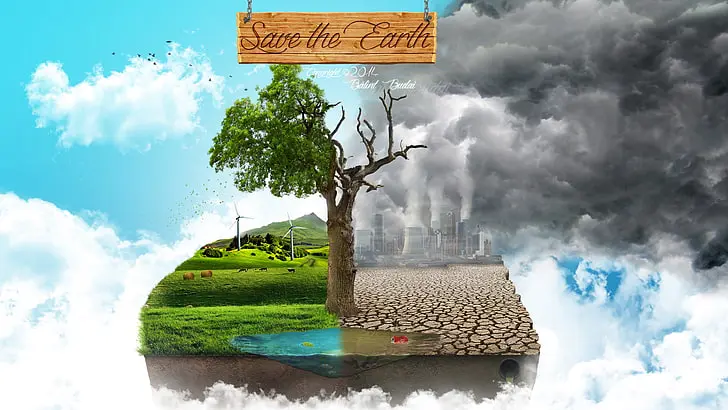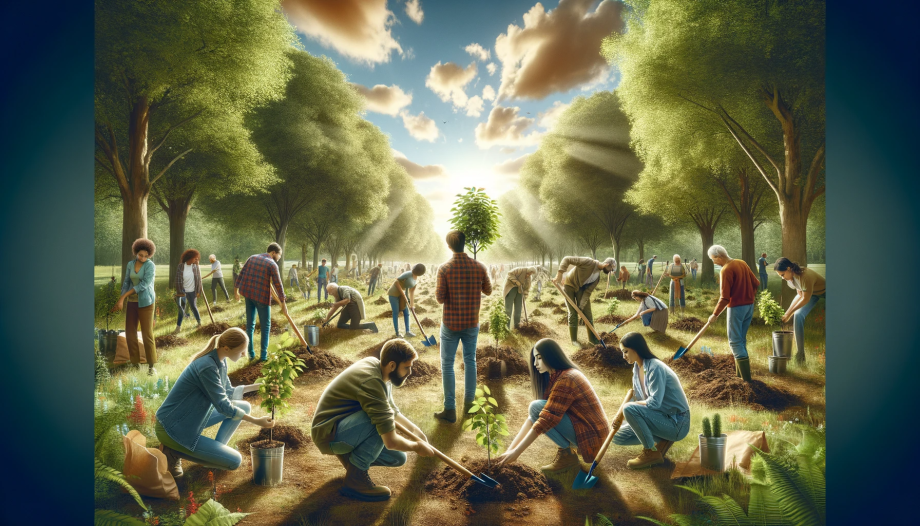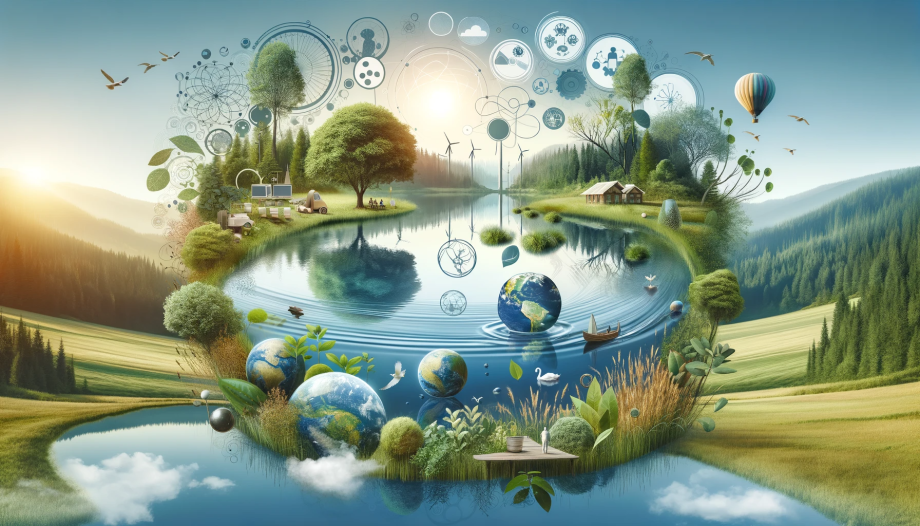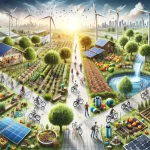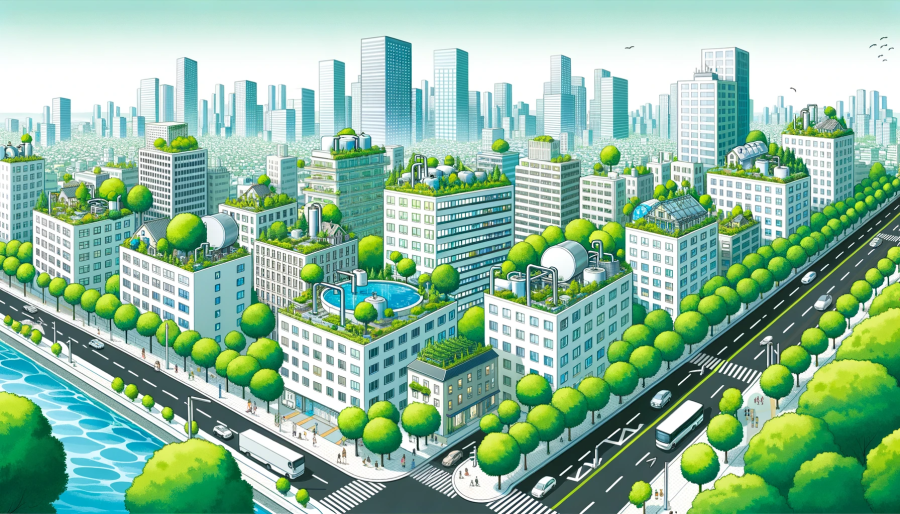
Explore the synergy between economic growth and sustainability goals for a prosperous, eco-friendly future. See how these goals can coexist!
Economic Growth Goals Key Takeaways:
In a world where progress and preservation go together, “economic growth and sustainability goals” are the twin stars guiding us.
They promise a future where prosperity blooms alongside a healthy planet.
Let’s embark on this enlightening journey to balance our ambitions with the well-being of our world.
The Blueprint for a Better World: Sustainable Development Goals
Introduction to Sustainable Development Goals
In our quest for progress, we’ve crafted a set of goals that serve as a compass for global development.
The Sustainable Development Goals (SDGs) are not just aspirations; they are a call to action for all nations to promote prosperity while protecting the planet.
These goals, adopted by world leaders, are a promise to future generations that we will strive for a better world through sustainable means.
The Vision and Targets of Sustainable Development Goals
The SDGs present a bold vision for humanity, comprising 17 interconnected goals that address the world’s most pressing challenges. Each goal is a piece of a larger puzzle, fitting together to form a picture of a world where everyone can thrive.
The 17 Goals: A Snapshot
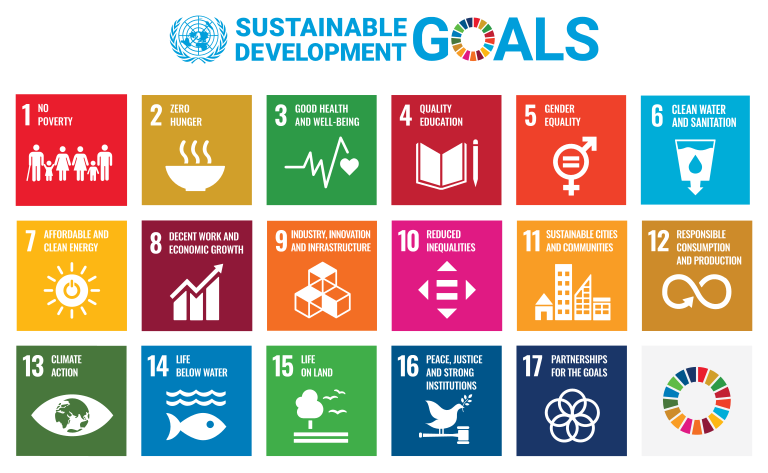
The 17 SDGs range from eradicating poverty to ensuring clean water for all.
They recognize that ending poverty must go hand-in-hand with strategies that build economic growth and address a range of social needs, including education, health, social protection, and job opportunities while tackling climate change and environmental protection.
The Interconnected Nature of the Goals
The beauty of the SDGs lies in their interconnectedness. For instance, improving health (Goal 3) can enhance education outcomes (Goal 4), which in turn can boost economic growth (Goal 8).
This synergy underscores the holistic approach needed to achieve sustainable development.
The Role of SDG 8 in Economic Prosperity
SDG 8 is pivotal as it promotes sustained, inclusive, and sustainable economic growth, full and productive employment, and decent work for all.
Its targets and indicators focus on areas like job creation, entrepreneurship, and innovation, which are crucial for a robust economy.
Decoding the Goals of Sustainable Development
The SDGs are more than lofty ideals; they are achievable targets that guide nations toward a sustainable and equitable future.
They are designed to be a roadmap for governments, businesses, and civil society to collaborate on a global scale.
The Endgame of SDGs: What We Aim to Achieve
The endgame of the SDGs is a world where no one is left behind.
It’s a future where economic, social, and environmental sustainability forms the cornerstone of all development efforts, ensuring long-term prosperity for all.
The Practicality of Sustainable Goals
While ambitious, sustainable goals are practical. They offer a framework for countries to tailor their policies and investments in a way that promotes sustainable practices across all sectors of the economy.
Sustainable Economic Growth: The Definition and Scope
Sustainable economic growth means fostering economic development that provides equitable opportunities for all without degrading the environment.
It’s growth that is resilient, inclusive, and decoupled from environmental impact.
The Economy in Harmony with Nature: Sustainable Economic Growth
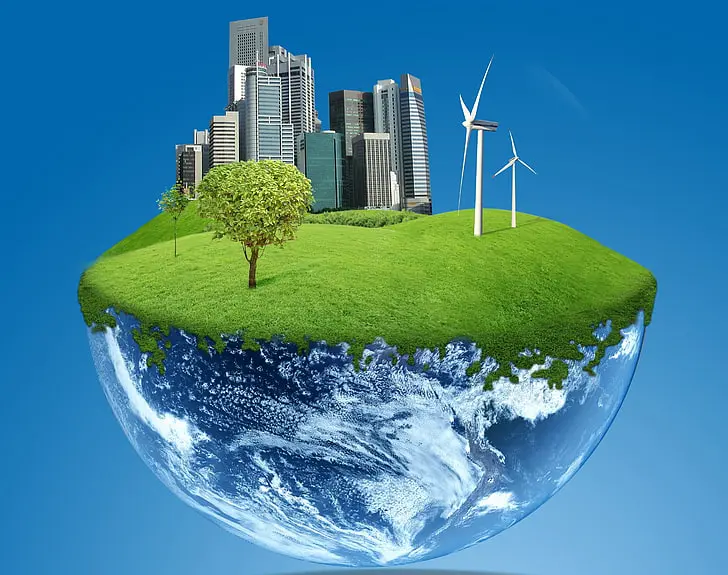
Introduction to Sustainable Economic Growth
Imagine an economy that grows like a tree, sturdy and enduring, not just in spurts but continuously, providing shade for generations to come.
That’s sustainable economic growth. It’s a model that allows us to enjoy the fruits of economic progress today without stripping future generations of the same opportunity.
The Pillars of Sustainable Economic Growth
Sustainable economic growth stands on three robust pillars: economic, environmental, and social.
Together, they support a growth that is balanced, ensuring that economic activities do not harm the environment and that the benefits are shared equitably among all members of society.
Economic, Environmental, and Social Pillars
The economic pillar calls for a diverse and dynamic economy that innovates and adapts.
The environmental pillar emphasizes the protection and sustainable use of our natural resources.
The social pillar focuses on inclusivity, ensuring that growth leads to improved quality of life for every individual, not just a select few.
Is Economic Growth Sustainable?
The question of whether economic growth is sustainable hinges on our approach.
When we integrate environmental and social considerations into our economic decisions, we pave the way for growth that can sustain itself and the resources it depends on.
Examples of Sustainable Economic Growth
There are shining examples of sustainable economic growth around the world. Countries like Denmark and Costa Rica are harnessing renewable energy, while Bhutan measures its progress with Gross National Happiness, prioritizing well-being over material growth.
The Goals and Realities of Economic Sustainability
Economic sustainability is not a distant dream but a practical goal. It’s about setting targets that are as realistic as they are ambitious, ensuring that our pursuit of growth today doesn’t compromise our children’s future.
The Economic Goals Within Sustainability
The economic goals within sustainability focus on long-term prosperity.
They include creating jobs that pay fair wages, fostering industries that can stand the test of time, and building economies resilient to shocks like climate change and global pandemics.
Economic Growth as a Sustainability Goal
Economic growth itself is a goal within the sustainability framework. It’s about expanding the economy in a way that contributes to the health of the planet and its inhabitants.
Its growth is measured not just by GDP but by improvements in human well-being and ecological health.
Achieving and Measuring Economic Sustainability
Economic growth, when steered correctly, can be a powerful engine for sustainable development.
It’s not just about increasing the numbers on a spreadsheet; it’s about expanding opportunities, enhancing well-being, and preserving the environment for a continuous journey of prosperity.
The Three Pillars of Economic Growth
Economic growth is a multifaceted goal, underpinned by three key objectives: efficiency, equity, and endurance.
These pillars ensure that growth is not just a short-term spike in production but a long-term increase in the true wealth of nations.
The Triad of Economic Growth Goals
The triad of economic growth goals includes creating a resilient economy that can weather global changes, fostering a fair economy where benefits are shared, and nurturing an enduring economy that can sustain its growth without depleting its resources.
How These Goals Contribute to Overall Sustainability
These goals contribute to sustainability by ensuring that economic growth does not come at the expense of environmental degradation or social inequality.
They promote a holistic approach to development, where economic decisions are made with the future in mind.
The three goals we have in mind—growth, sustainability, and inclusion—buttress one another yet don’t always pull in the same direction; we see powerful reinforcing as well as counteracting loops among them (exhibit). And so, while many might broadly agree on the aspiration, there’s a very tough question lurking in the background: How do we go about building a future that delivers growth and sustainability and inclusion? https://www.mckinsey.com/featured-insights/sustainable-inclusive-growth/our-future-lives-and-livelihoods-sustainable-and-inclusive-and-growing
Measuring Success Towards Sustainable Economic Growth
Success in sustainable economic growth is measured by more than just GDP.
It’s gauged by improvements in human capital, the health of the environment, and the strength of social institutions.
Indicators and Metrics for Sustainable Economic Growth
Indicators for sustainable economic growth include metrics like the Genuine Progress Indicator (GPI), which accounts for environmental and social factors, and the Human Development Index (HDI), which measures education, health, and living standards.
Success Stories: Benchmarks Achieved Globally
Around the globe, success stories abound. Nations are shifting towards renewable energy, companies are adopting circular economy principles, and communities are embracing sustainable agriculture practices. These benchmarks are not just achievements but stepping stones to a more sustainable future.
The Path Forward with SDGs and Economic Growth
As we forge ahead, the SDGs serve as our guideposts, and sustainable economic growth is our destination.
It’s a path that requires diligence, innovation, and collaboration. By committing to these goals, we ensure that our journey toward economic prosperity also leads to a healthier planet and a more equitable society.
FAQs on Economic Growth and Sustainability
In the dialogue about sustainable development and economic growth, questions often arise. These FAQs aim to clarify common queries, providing straightforward answers that illuminate the complex relationship between our economy and sustainability goals.
Q. What is the relationship between economic growth and SDG?
A. Economic growth and the Sustainable Development Goals (SDGs) are deeply intertwined.
Economic growth provides the resources needed to invest in healthcare, education, and infrastructure, which are essential for achieving the SDGs.
Conversely, the SDGs offer a framework for sustainable growth, ensuring that economic advancement doesn’t come at the cost of environmental degradation or social inequality.
Q. How does economic growth relate to sustainability?
A. Economic growth relates to sustainability by its potential to improve living standards while preserving natural resources.
Sustainable growth means building an economy that can continue to develop without exhausting the resources future generations will depend on.
Q. What are the economic sustainable goals?
A. The economic sustainable goals include fostering innovation, promoting fair trade, ensuring decent work for all, and supporting sustainable industrialization.
These goals are part of the broader SDGs and specifically relate to how economies can grow in harmony with the environment and society.
Q. What is economic growth as a goal?
A. Economic growth as a goal is about increasing the capacity of an economy to produce goods and services, leading to higher living standards and improved quality of life.
However, when framed within sustainability, it also includes ensuring that this growth is long-term and equitable.
Q. What is an example of sustainable economic growth?
A. An example of sustainable economic growth is the transition to renewable energy sources.
This shift not only creates jobs and drives economic activity but also reduces greenhouse gas emissions and lessens reliance on finite resources.
Q. What are the three goals of economic growth?
A. The three goals of economic growth are to increase the availability of goods and services, to improve the standard of living for the population, and to ensure economic stability and resilience.
When aligned with sustainability, these goals also include the responsible use of resources and equitable distribution of wealth.
Economic Growth and Sustainability Goals Conclusion
Embracing the Journey Ahead
As we stand at the crossroads of progress and conservation, the journey towards harmonizing economic growth with sustainability goals is more critical than ever.
It’s a path that demands innovation, commitment, and a reimagining of what true prosperity means.
The Sustainable Development Goals are not just signposts along this path; they are the very essence of the map that guides us.
Reflecting on Our Shared Vision
Our shared vision for a sustainable future is one where economic growth does not borrow from the earth more than it can replenish.
It’s a vision where the well-being of people and the health of the planet are seen not as competing interests but as mutual goals.
Read more: 27 Sustainability Ideas: Easy Greener Living Ideas – Sustainably Forward
The Role of Innovation and Technology
Innovation and technology will be the torchbearers on this path.
From renewable energy to sustainable agriculture, they offer the tools to build an economy that grows in harmony with nature.
The Power of Collective Action
The power of collective action cannot be overstated. Governments, businesses, and individuals all have a role to play.
When these forces align, the potential for transformative change is immense.
The Legacy We Leave
The legacy we leave for future generations hinges on the decisions we make today.
By choosing sustainable economic growth, we are choosing to leave a legacy of abundance and resilience.
The Call to Action
The call to action is clear. We must all be stewards of the earth, guardians of prosperity, and architects of the future.
The SDGs provide the blueprint, but the work is ours to do. It’s a call that we must answer with urgency and hope, for the sake of all who will inherit this world.

